Amy Sue Nathan's Blog: Women's Fiction Writers, page 17
May 2, 2016
Guest Post: My Mother’s Day Book List by Author Julie Cohen
This coming Sunday is Mother’s Day (subtle reminder!) so what better time than to hear from author Julie Cohen about the books that remind her of reading with her mother? No better time. I agree! And because timing is everything, I’ll mention that I just read Julie’s next novel–WHERE LOVE LIES. It’s already a smash in the UK, and now it will be published in the good ol’ USA as well. Lucky us!
Please welcome Julie Cohen to WFW, and share some of your favorite reads for Mother’s Day, or any day, in the comments.
Amy xo
Books to read with your mother
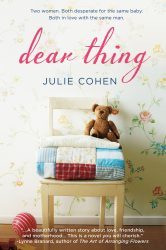 Like a lot of bookworms, I inherited my love of reading from my parents. The house where I grew up in Maine was on the top of a hill, and the library was at the bottom. As a child I would browse the children’s section, which was in the basement, while my mother selected books upstairs from the main library. The walk back home, up the hill, was the best part: even though you were carrying a stack of books you could walk slowly, opening covers and sampling what was inside, planning which book you would start reading first.
Like a lot of bookworms, I inherited my love of reading from my parents. The house where I grew up in Maine was on the top of a hill, and the library was at the bottom. As a child I would browse the children’s section, which was in the basement, while my mother selected books upstairs from the main library. The walk back home, up the hill, was the best part: even though you were carrying a stack of books you could walk slowly, opening covers and sampling what was inside, planning which book you would start reading first.
Although my mother taught me a love of reading, she and I don’t completely share tastes in books. She’s not as fond as I am of science fiction or horror or Jane Austen. But I’ve learned that I’ll almost always like a book that she likes, and she’s recommended wonderful books to me such as The Shipping News by Annie Proulx and The Weight of Water by Anita Shreve. And I first read Little Women by stealing her copy. Likewise The Color Purple.
Here are some books that remind me of reading with my mother:
When We Were the Kennedys by Monica Wood
This is a wonderful, lyrical, emotional memoir of growing up in Mexico, Maine, right across the river from Rumford, which is the town where my mother and I both grew up. It’s the story of a Catholic family of four girls who lose their father, who works in the local paper mill. As my mother grew up Catholic with three sisters and a brother, and her father worked in this same paper mill, the story really resonated with her. But it’s a universal story of mothers and daughters, of loss and hope, and I recommend it to everyone.
Charlotte’s Web by E.B. White
I remember my mother reading this to me before bed when I was a little girl. She read me a lot of books—I can’t read Goodnight Moon without hearing the cadence of her voice in my head, and every single time we go blueberry picking we remember reading Blueberries for Sal by Robert McClosky. But Charlotte’s Web stands out, probably because the mere title of the book has the power to move both my mother and me to tears. When I was pregnant with my son, we went to see a film together and there was a trailer for Charlotte’s Web. Sure enough: as soon as we knew which book it was, we both started sobbing. Two grown women, turned into gibbering wrecks, by the best spider the world has ever known.
Call the Midwife by Jennifer Worth
This is sort of a guilty pleasure. At Christmas, Mom and I wait until all the menfolk are out of the house and we sit down and watch Call the Midwife on television together. My mom was a nurse and she loves the vintage nursing aspect of it. But mostly we both love the characters of plucky midwife Jenny and her friends, Trixie, Cynthia and Chummy. I bought her the original trilogy of memoirs that the series is based on, and we both devoured it.
Jerusalem by Yotam Ottolenghi
My mother is a fantastic cook and she’s passed on her love of food to her children. Jerusalem is a cookbook but also a sumptuously-illustrated appreciation of Israeli food. My brother actually bought Jerusalem for Mom but she keeps it on her coffee table, and I am always leafing through it. We’ve both tried recipes from it (we love the burnt eggplant), and when she’s in England visiting me we’ve shared some special mother-daughter lunches at Yotam Ottolenghi’s London restaurant, Nopi.
The Marrying of Chani Kaufman by Eve Harris
I’m sort of cheating with this one, because Mom hasn’t read it yet. But I just finished reading this story of marriage and love in an orthodox Jewish community in London, and as soon as I finished, I called my mother to tell her to read it. It’s got everything we both enjoy in a book: strong and vibrant female characters, a real sense of place and community, and the use of food to portray culture and tradition. I think she’s going to love it.
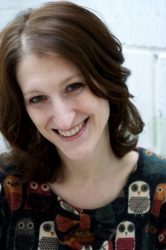 Julie Cohen grew up in Maine and studied English at Brown University and Cambridge University. She then moved to the UK permanently, where she taught English before becoming a writer. Her books have won or been shortlisted for the Romantic Novelists’ Association’s Award, the National Readers’ Choice Award, and the HOLT Medallion. She now writes full-time and teaches creative writing. She lives with her husband and son in Berkshire, England, where she is teased daily about her American accent.
Julie Cohen grew up in Maine and studied English at Brown University and Cambridge University. She then moved to the UK permanently, where she taught English before becoming a writer. Her books have won or been shortlisted for the Romantic Novelists’ Association’s Award, the National Readers’ Choice Award, and the HOLT Medallion. She now writes full-time and teaches creative writing. She lives with her husband and son in Berkshire, England, where she is teased daily about her American accent.
DEAR THING
After years of watching her best friends, Ben and Claire, try for a baby, Romily has offered to give them the one thing that they want most.
Romily expects it will be easy to be a surrogate. She’s already a single mother, and she has no desire for any more children. But Romily isn’t prepared for the overwhelming feelings that have taken hold of her and that threaten to ruin her friendship with Ben and Claire—and even destroy their marriage.
Now there are three friends, two mothers and only one baby, and an impossible decision to make…
Amazon
Barnes & Noble
Books-a-million
IndieBound
Powell’s
Walmart
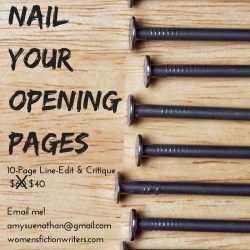
May 1, 2016
The Writing Life #5

Writing terminology doesn’t always work for me. I lie. Writing terminology rarely works for me. Tell me I need a rising action and a black moment and my brain starts to develop a fuzz. Tell me I need tension and conflict and whatever’s in my belly starts to curdle. So I take these terms, these THINGS that are necessary to fiction, and I figure out what they mean and assign new names for them, the way my kids assigned words or phrases to things when they were little, words that made sense to them. To all of us. Sprinkle cheese. Fishy crackers. Pick me down.
RISING ACTION – I think of this as the character’s TO-DO LIST. What he or she has to do to get where her or she needs to go, in order of intensity and importance.
BLACK MOMENT – Yes, this is the worst thing that happens to the character. Seems pretty self-explanatory, but for me, the term “black moment” doesn’t resonate. I think of this ROCK BOTTOM.
TENSION – We know we need it but what does it mean? To me it means WORRY. I have to make the reader worry about the character even if she isn’t worried about herself.
CONFLICT – Oh, I hate conflict. I hate having it and I hate writing about it. It’s my nemesis, this conflict thing, so I think of it as a KNOT that needs untangling. First I tie the knot, then I work over time to untie it. If there’s no knot that needs untangling, why would a reader continue? If there’s a knot but no untangling over time? I wouldn’t like that either!
Perhaps this sounds complicated, but for me, having the words that make sense to me make it possible for me to write novels.
But, I think that in today’s publishing climate, the most difficult term to understand is HIGH CONCEPT. We know we need one, but what is it? Some say it’s being able to describe your book in one sentence. C’mon, anyone can do that but it doesn’t make it high concept. To have a high concept idea you have to know what that is. Then, you have to see if your story has one. If it doesn’t, you have to see if it can.
To me, high concept is THE MOMENT. What’s the moment in the book the rises to the top of your thoughts? It’s not a sweeping generalization, it’s as specific as can be. (The rest can float around it.) HIGH CONCEPT isn’t about the big picture, it’s about an moment that is active and understandable and vivid.
THE GLASS WIVES — A divorced mom takes in her ex-husband’s young widow and baby after he dies.
THE GOOD NEIGHBOR — A single mom invents a boyfriend and then is hired to be a relationship expert.
LEFT TO CHANCE — A woman returns to her hometown to photograph her dead best friend’s husband’s second wedding.
THE LAST BATHING BEAUTY — Just kidding! I’ve only begun writing this, as you know, so I can’t even go there! I cannot yet boil down the jumble of ideas to a single MOMENT.
Yes, these MOMENTS are oversimplified but you have to start somewhere. You have to have something to say that makes someone UNDERSTAND when really, they don’t have much information at all. There’s so much more to each of these stories, but at their core, this is what they’re about. These are the palpable moments that are the heartbeat of these stories, the purpose that runs through it. It’s not the theme of the story and it’s not the whole story — it’s a bit that sparks thought and imagination and curiosity. It’s what sets up the need for more. It needn’t be clever, it needs to be direct. It shouldn’t be vague, it has to be specific.
All of those other elements can and should be present in a pitch, back cover copy, a synopsis. But to pinpoint your high concept you need to hone in on A MOMENT. I also can think of it as a hook, but I tend to think of the hook as the first page or first scene (and we’ve talked about that, remember?).
Do all books have a high concept? Today, most commercial fiction does. It has to in order to compete with the gazillions of books out there.
So, what’s yours? Share your high concept for your book, books, or works-in-progress in the comments. Do you have a different though on what high concept is to you? Let us know.
As with any writing advice, your mileage may vary!
 Last but not least, in honor of my trip to the Franklin Delano Roosevelt homestead and presidential library in Hyde Park, New York in the Hudson River Valley (not the Hyde Park in Chicago or London), I’m kicking off May’s NEW DEAL FOR EDITING. In April, I critiqued a slurry of first-fifty-pages for $100. (And shh! Don’t tell anyone, but if you email and ask me to extend that old deal, I’m likely to do so, but that’s just between us.)
Last but not least, in honor of my trip to the Franklin Delano Roosevelt homestead and presidential library in Hyde Park, New York in the Hudson River Valley (not the Hyde Park in Chicago or London), I’m kicking off May’s NEW DEAL FOR EDITING. In April, I critiqued a slurry of first-fifty-pages for $100. (And shh! Don’t tell anyone, but if you email and ask me to extend that old deal, I’m likely to do so, but that’s just between us.)
THE NEW DEAL for May: OPENING PAGES – 10 line-edited and critiqued pages – $40.
Just email me at amysuenathan at gmail dot com to be added to the editing queue so we can work on YOUR first scene or chapter and find out if you’ve set expectations and hooked your reader (me)!

April 27, 2016
Guest Post: Author Molly D. Campbell Kills Her Darlings And Lets Us Watch!
Please welcome novelist and humorist Molly D. Campbell to WFW today as she talks to us about the rules of writing! If you have any thoughts or examples to share, please do so in the comments!
Amy xo
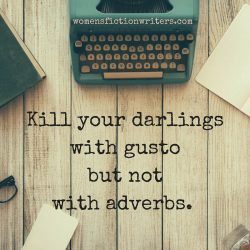
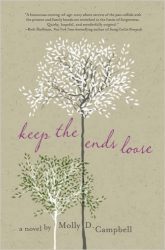 I am a published author, so that makes me an authority on writing things, doesn’t it? There are rules to follow. I try to follow them. One rule that has me flummoxed is the current ban on adverbs. You read that correctly. Correctly is an adverb. So how should I have said that just then? You read that with accuracy? Bah.
I am a published author, so that makes me an authority on writing things, doesn’t it? There are rules to follow. I try to follow them. One rule that has me flummoxed is the current ban on adverbs. You read that correctly. Correctly is an adverb. So how should I have said that just then? You read that with accuracy? Bah.
But since I plan to write more than one novel, and I am actually (another adverb) a third of the way through my next one, I thought I would share with you some of the no-nos in the author game. You know, so you will be a better critic in the future. But be kind in those Amazon reviews—some of them have been so harsh as to cause writers to contemplate becoming auto mechanics and cocktail waitresses instead. But I digress. You aren’t supposed to do that as a writer, either.
A cardinal rule of the writing business is “Show, don’t tell.” It took me about three years to understand what this really means. I am terrible at it. But the following are examples:
TELL: Audrey felt just sick about having to inform Robert that she couldn’t possibly marry him. After all, she still got cold shivers when she thought about Pierre. Pierre was the love of her life, and Audrey believed with all of her heart that he would return from that trip down the Amazon River to discover the cure for arthritis.
SHOW: Audrey woke, her pillow damp with her tears. She put her hand on her forehead, which throbbed from the dream that was so vivid. Pierre was rowing towards her, his eyes full of terror. Suddenly, out of nowhere, a giant boa constrictor reared out of the water, slithered onto Pierre’s tiny boat, and enveloped him in a twisting death grip. “Audrey, Audrey!” Pierre managed to cry, as the evil snake crushed the life out of him. Audrey picked up her cell phone and punched the “Robert” icon. “Hi, darling,” she said. “Oh yes, I will marry you!”
See? So much more literary.
Another writers’ tip is to use dialogue, not description. Readers tire of long passages full of poetic language, no matter how many hours the author spent painting the scene for them and being vivid. Nope. We would rather just move along. Let the characters move the plot, and really, we don’t actually care what color the leaves were on the trees that afternoon. For example:
DESCRIPTION:
The sky darkened. The parched, mahogany leaves rattled in the sudden breeze. Flora felt the goosebumps rise on her arms, drawing the thin muslin wrap around her. Thunder rent the air with dissonant anger. Grant began to pack the picnic things into the basket, but not before the huge, cold drops began to fall. The sky took on a greenish hue as the lightning pierced the clouds. Grant seized the picnic basket in one hand and extended his other out to the frightened and shivering girl. As they hurtled toward the distant farm cottage, a thunderclap nearly knocked them down.
DIALOGUE:
“Shit, Flora, I think it’s going to rain! Hurry up and finish your sandwich. We need to get out of here!”
“Don’t be silly. It is just heat lightning. It happens all the time around here. Want a pickle?”
“For God’s sake, are you nuts? My cousin got struck by lightning three years ago at the golf course, and he has been a sniveling idiot ever since—you can stay as long as you want, but I am getting out of here.”
“You are overreacting, as usual. Wait! Damn! My Sierra Mist just blew over! You may be right. Look at the sky—it’s puke green…”
Which book would you rather read? I thought so.
So you see, we authors don’t just jot down whatever comes into our heads. It’s a craft. Nay, an art form! We spend hours just sifting through our heads for the right word. We agonize over those adjectives, and we brutally eliminate those adverbs (oh, right—brutally is an adverb). We struggle with realistic dialogue.
Yup. So right now I have to get back to Flora, Pierre and Robert. Poor Pierre. That anaconda—or was it a boa constrictor—just sealed his fate, and tonight, Robert is going to get lucky…
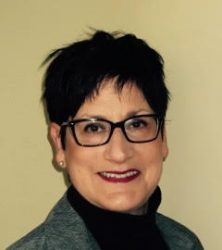 Molly D. Campbell is a two-time Erma Bombeck award winning author. She is the author of Characters in Search of a Novel. Visit Molly’s blog at www.mollydcampbell.com and read Molly’s debut novel, KEEP THE ENDS LOOSE.
Molly D. Campbell is a two-time Erma Bombeck award winning author. She is the author of Characters in Search of a Novel. Visit Molly’s blog at www.mollydcampbell.com and read Molly’s debut novel, KEEP THE ENDS LOOSE.
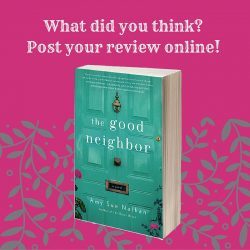
If you liked THE GOOD NEIGHBOR, please CLICK THE IMAGE to help spread the word to new readers! Reviews really help! Thank you! –Amy xo
April 25, 2016
Guest Post: Liz Fenton And Lisa Steinke Tell Us How Two Best Friends Write One Book (And Remain Best Friends!)
I’ll be honest. I’ve heard this story before! That’s because I’m lucky enough to have spent lots of IRL time with Lisa Steinke and Liz Fenton, who co-write their novels. Yes, you read that correctly. They write together. Once you spend time with them it doesn’t seem so outlandish. They are separate but equal, together but apart, when they’re presenting a book talk or sitting on a panel or signing books (even if no one shows up—oh yes, that happened to us together in Tucson) or eating dinner at a table filled with twenty authors. They’re humble but self-assured, funny yet sincere, and THEY WRITE GREAT BOOKS.
So to quell the curiosity, Liz and Lisa are here today celebrating the launch of their third novel, THE YEAR WE TURNED FORTY, and telling us how they do what they do.
Please welcome Liz and Lisa back to WFW and ask them anything you’d like to know in the comments. And check out their books on their website: lizandlisa.com.
Amy xo
We are thrilled to be guest posting on Women’s Fiction Writers. We’ve long been fans of Amy Sue Nathan’s site and are excited to be here. Thanks, Amy!
I’m thrilled too. Can’t wait until we have the chance to get together in person again! xo
Click to view slideshow.
Writing together, separately
By Liz + Lisa
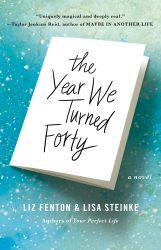 One of the questions we are often asked is: How do you write together? Wide-eyed, the person will wait for our answer. We often wonder what they expect we’ll say. Maybe they picture one of us hunched over the other’s shoulder, breathing adjectives into her ear. Or maybe they think we sit side-by-side at the keyboard, Liz using her left hand and Lisa, her right.
One of the questions we are often asked is: How do you write together? Wide-eyed, the person will wait for our answer. We often wonder what they expect we’ll say. Maybe they picture one of us hunched over the other’s shoulder, breathing adjectives into her ear. Or maybe they think we sit side-by-side at the keyboard, Liz using her left hand and Lisa, her right.
To be clear, our goal is to never be writing the same thing at the same time. That version of teamwork reminds us of a three-legged race. Two people’s legs bound together as they wobble toward the finish line. While literally being joined at the hip might work for some authors, it definitely wouldn’t be our choice. Not only would we fall over because we’d both be fighting to lead, we’d lose. We’d kill each other if we were that collaborative. (Long story, but we tried it in college once and it ended with a word processor on the floor!)
The way we write together is by doing it separately. Meaning, there are two thousand miles between us as we do it. We are in separate offices in separate homes in separate states. But yet, we are completely and wholeheartedly collaborative. We email. We talk on the phone. We text. Sometimes we do all three at the same time. We have as many discussions as it takes to agree on things like character development and story arc. Then we begin writing. (alone!)
So how exactly do two people write one book? Our system is simple. One of us writes the first chapter, sends it to the other for edits and we rinse and repeat until we agree that chapter is done. Then the other writes the second chapter, and so on. And by the time we type those two little words on that last page, we really have only a vague idea as to who has written once. In our minds, that is a perfect collaboration—when the finished product feels like the perfect blend of the both of us.
Of course there are other factors in being a successful writing team. We must be caffeinated! And wear our thickest skins when reading edits! And, most importantly, we have to be completely trusting of each other. Of course, there have been bumps in the road (read: fights!). But these missteps have only helped us learn important lessons about writing and each other. And as a result, we’ve become better writers and friends. With our third novel about to be published, we feel thankful to have our names on a book cover together. And we often ask solo authors, How do you write a book all by yourself?
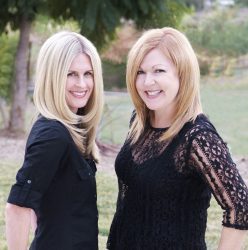 Liz Fenton and Lisa Steinke have been best friends for more than twenty-five years and survived high school and college together. Liz lives in San Diego with her husband and two children. Lisa, a former talk show producer, lives in Chicago with her husband, daughter and two bonus children. Find them online at Lizandlisa.com and on Instagram at @Lisaandliz.
Liz Fenton and Lisa Steinke have been best friends for more than twenty-five years and survived high school and college together. Liz lives in San Diego with her husband and two children. Lisa, a former talk show producer, lives in Chicago with her husband, daughter and two bonus children. Find them online at Lizandlisa.com and on Instagram at @Lisaandliz.
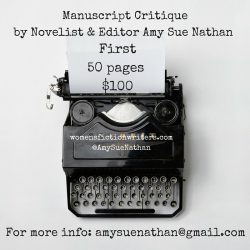
April 24, 2016
The Writing Life #4
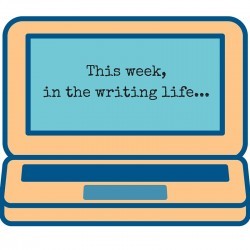
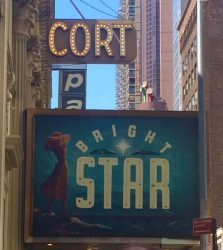 Last weekend in New York City I was fortunate enough to see BRIGHT STAR, a new Broadway musical written by Steve Martin and Edie Brickell, based on the true story of a baby who was thrown off a train. Doesn’t sound like musical material, does it? Well, it is! The show has a dual timeline in which the audience follows a twenty-three year old Billy, an aspiring and talented writer (yes!! a musical about a writer!) and Alice, who’s about forty, who’s the editor of a literary magazine (yes! a musical about an editor!). It’s a love story, a family story, and filled with—get this—Bluegrass music. It’s a love story at its heart, as well as a family saga.
Last weekend in New York City I was fortunate enough to see BRIGHT STAR, a new Broadway musical written by Steve Martin and Edie Brickell, based on the true story of a baby who was thrown off a train. Doesn’t sound like musical material, does it? Well, it is! The show has a dual timeline in which the audience follows a twenty-three year old Billy, an aspiring and talented writer (yes!! a musical about a writer!) and Alice, who’s about forty, who’s the editor of a literary magazine (yes! a musical about an editor!). It’s a love story, a family story, and filled with—get this—Bluegrass music. It’s a love story at its heart, as well as a family saga.
I laughed at the writing and literary jokes, and got all choked up when Alice said to Billy, “You can write.” My hand may have even touched my heart.
But remember all those notebooks and pens I took with me on my trip? I didn’t use any of them. I spent four days visiting with family and friends and not working on my book. Best of all (yes, even better than Broadway), I spent about twenty-four hours with my twenty-four-year-old son who lives in Manhattan (and has long enough arms to take a selfie, which I do not).
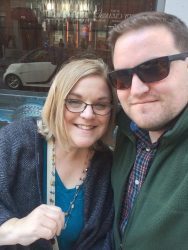
Now you understand why I didn’t even write a list while I was gone (okay, I jotted down a few quotes while visiting the FDR Presidential Library, but that was it). It was a recharge I needed with many of people who are most important to me.
So this week, once I recovered from traveling, in addition to diving back into my editing projects (no fear, writer clients, I have not forgotten you!) I decided to work on my quick/elevator/short pitch for my WIP, in order to hone in on the high concept idea—to make sure there was one. My stories always float around in my head, fully formed yet fluid, and writing, revising, and rethinking it in a one-paragraph format allows me to focus on what’s most important. Next week we’ll play with elevator pitches and talk about WHAT THE HECK IS HIGH CONCEPT? If you’d like your elevator pitch or high concept idea featured here, just email it to me at womensfictionwriters@gmail.com by Thursday, April 28, and I’ll choose a few to post (let me know if you’d prefer to be anonymous, otherwise, your name goes up as well).
Thank you to those of you who participated and chimed in as to whether the first scene of my WIP, The Last Bathing Beauty, set your expectations for the rest of the story. (If you missed it, click here.) You offered great insights and gave me a lot to think about as I continue writing about Hannah and Boop! About a dozen of you were brave enough to speak your piece, but about 2000 people saw that post. I don’t talk about numbers much here, but a very small percentage of you comment, and I (and the guest posters) appreciate it more than you know!! Don’t worry lurkers, we love you, too!
A few of you were brave enough to put your own work out there for us to read. Today we have Ina’s first scene. Please comment and let Ina know if this first scene of her novel OF GHOSTS AND GODS (great title, right?) has set your expectations for the rest of her story. Does it give you enough information so that you could fill in the gaps yourself (you know, in case cockroaches ate the rest)? Tell Ina how this works for you, or how it could work for you better. Be helpful and kind and honest.
OF GHOSTS AND GODS – by Ina Jones
Early April, 1983
Louise folded the last Tee shirt from the laundry while the roast “rested,” as her Dad had required ever since she was a little girl. He had been the chief cook and bottle washer on Sundays, especially for the Crown Roast at Easter. “Be it ever perfect to carve,” was his mantra, as he smiled with that elfish twinkle in his blues. Often, he’d play the comedian in exaggerating the “art” of carving and yet, every slice, so neatly placed on the platter. She still wonders how he did that.
The roast for their dinner would be ready in about twenty minutes; its aroma filling the kitchen, spilling over into the dining room, mixing with the scent of lemon meringue pie and of course, clean laundry. With children now gone, there was really no need to carve the roast perfectly as her Dad; in fact, sometimes it just sat beyond its being ready, draped lightly in aluminum foil, her husband being engrossed in projects out in the garage.
A door slammed and jolted her day-dreaming.
Her husband charged into the dining room, arms in the air, jaw taut in frustration.
Louise, caught off-guard by his abrupt, angry appearance, could see his demeanor showing no way of her avoiding confrontation.
She tried to speak but her body did not respond. Paralyzed where all decisions and actions were to be possible, she stood watching the silent tirade, icy fear twisting around her heart…this is crazy. I can’t hear or move.
Her mind stymied as it was, reeled in shocked confusion as to what happened next. Within a matter of seconds, the furniture, walls, everything around them vanished, replaced by a milky, quartz white of nothingness.
He, silhouetted against it, still animated, his anger building. She stood wide-eyed, not blinking, trying to understand everything.
Louise knew there were no sensible whys and wherefores for any of it. Even in her dreams, or in flights of craziness, she never visualized this phenomenon, this weird separation from what just was…
He took a step closer, jaw clenched tightly, muscles responding.
Her breathing shallow and fast, mind racing a crazy mixture of hope and fear, heart pounding, feeling isolated, helpless.
As from cue off-stage, methodically and unflinching in action, she saw her right arm lift away from her body, a revolver gripped firmly, dark metal prominent against her sun-tanned skin.
That’s odd; no! Wait! Wait!
Unable to stop the motion, her mind seemed to force her to watch the movement of the trigger pulling back, smooth and deliberate; the copper-tipped bullet twisting slowly as it left the muzzle, disappearing into oyster-gray smoke towards her husband. The walls, windows, and furniture re-appeared as suddenly as they had left.
He stood, leaning in towards her about five feet away, mouth moving, arms outstretched, palms up, as if questioning. Now she heard him, shouting expletives as he strode off in disgust, leaving her alone, motionless by choice.
Louise felt relief…just a vision…hallucination or something…not real, not real.
She stared straight ahead, beyond where he once stood; beyond where white once was; beyond the screened-in patio, her eyes resting on the cement Flamingo statues saved from a garden redo…but her mind only dimly registered what she was seeing. Their bodies bleached to barely a blush from years in the sun, both stood stiffly on their rebar legs beside the cracked bird bath that held no water. The beak on one, badly chipped, the other, a rusty head wound.
Louise gasped, alarmed, realizing in a shiver of panic―she and her husband, the flamingos―their marriage, the bird bath.
Please leave comments for Ina below and give her big virtual hugs for wanting to do this!
See you next week (and in the comments)!
Amy xo

April 20, 2016
Guest Post: 5 Tips For A Successful Book Giveaway! By Author Kate Moretti
We live in a culture of free stuff. Buy this, get that. Enter here, win there. Author Kate Moretti is here today to discuss the pros and cons of book giveaways with tips for making this crazy craze work for you.
Kate’s next book, The Vanishing Year, comes out in September and I’ve read it! It’s a marvelous thriller with a female protagonist and a little bit of a romantic tinge to go along with all the OMG scary stuff. Kate will be back in the Fall to talk about the book.
For now, settle back and learn from one of the best and brightest authors I know (and someone who chats with me before dawn). I met Kate because we’re both members of Tall Poppy Writers. You can check us out in the sidebar
Please welcome Kate Moretti to WFW!
Amy xo

by Kate Moretti
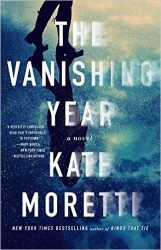 There is much debate over giveaways these days. What authors gain, what readers gain, what is the real cost of giving away books and is there such a thing as too many?
There is much debate over giveaways these days. What authors gain, what readers gain, what is the real cost of giving away books and is there such a thing as too many?
In the age of the internet, everything can be gotten for cheaper. Services like fiverr will draw you a logo for less than a Starbucks – a service that used to cost hundreds and a creative partnership with a graphic designer who would work with you on your vision for your brand. Now, you present an idea and with (very ) little back and forth, voila! Here is your image file. Colors a little wonky? Font not quite right? Too bad. It was $5. Who could complain?
It seems like art is commodity these days, subjected to the rules of capitalism: can a reader get a cheaper book than yours? Sure, but it’s not your book. Does that matter? Maybe, maybe not. Authors are a dime a dozen. It’s a grim perspective, I’ll admit.
The only way to combat this is to build readership loyalty. To instill in YOUR readers that they want your books, your voice, YOU, regardless of price and market glut. To do this, every sale and more importantly, every reader has to count. Author have never worked harder for less return. This is the reality and there is very little we can do to change that.
I do think one of the tools in our arsenal for building readership is THE GIVEAWAY. I know. I just said art is being cheapened. It’s true. Does giving it away for free help or hurt that? It’s a fine line. If you give away a book a week for a year, your readers will stop paying for your books. They know that if they wait, they’re likely to snag the same book for free. All they have to be is patient. Time cost a reader nothing – there are a ton of books to read in the meantime (all being given away for free)!
There’s an antidote to this. Stop giving them away for free.
But. You just said… I KNOW.
The real trick is to make sure your reader – or rather, your new potential reader – always gives you something. It doesn’t have to be money.
There are a few ways to do this:
Don’t walk away from any giveaway empty handed. If it doesn’t net you Goodreads shelves, Twitter followers, new emails for your mailing list, Facebook likes, simply do not do it. Expanding your reach to 100 new people is worth the price of admission (in this case, one, maybe two books). Will those 100 people stick around? Who knows? This part is unquantifiable, but even if you net a 10% ROI, that’s ten new readers who didn’t know about you before. Or weren’t following you before. That’s fine. That’s great. Every reader counts, right?
Do joint giveaways. This is my biggest thing. Join with like-minded, and only slightly like-audienced authors. Don’t turn to your writer BFF. You’ve likely been shouting about them for a while now (and vice versa) and your audiences are now shared and you’re both just noise. Find a new friend. Someone whose book you’ve read and loved maybe. Do your homework. Who are you “like”? Who would your readers like to read? Find that author. If they’re new to you, chances are a sizable portion of their audience is new to you.
Partner with someone unique. Write a beach book? Find a beach clothing line. Write a mystery? Find a funky homemade candle shop. Make sure to get your price of admission (email, etc) but recognize that many of these entrants come to the party for the free food and that’s it. It’s your job to keep them once they’re there. If your price of admission is an email, follow up your giveaway with a newsletter that could possibly convert your new audience. You’re still going to lose some of these people. That’s ok. Some will stay. Some will open. Some will click through.
Lower your expectations. Understand that a book giveaway on your own page, for a backlist title is going to net you the least amount of gain. Alternatively, if you gather 250 new emails from a partnered giveaway and 150 of those are fake emails, and then 50 unsubscribe, don’t lament the 200 you lost. Celebrate the 50 you gained (an important side note: blindly running all of these through your newsletter service will likely get you in trouble and/or labeled as a spammer. Find a way to vet them first. MailChimp has a double-opt in feature. Use it).
Be judicious. Participate in giveaways when you have something to gain. If you have one book, giving it away garners you almost Should you never do a giveaway as a debut? Of course you should. Should you do ALL THE GIVEAWAYS? No. Pick and choose the ones that get you the largest return. If you’re a debut, don’t partner with another debut (unless one of you is being heavily promoted by your publisher and might come into the game with a sizable audience). Find a more established author and see if they’ll partner with you. Use services like Rafflecopter or Gleam to make sure you offer them a return, too, in the form of followers, subscribers, likes.
The bottom line is: giveaways can be great. They’re also colossally abused. Don’t abuse them, don’t sign up for every one you see. Realistically look at what you can afford to give away and pick which giveaways will give you the biggest return on your investment. The largest audience gain (large joint giveaways through Rafflecopter, with an option to follow you, for example). One by one, you can build a readership that is willing to pay for you with what’s in their wallet.
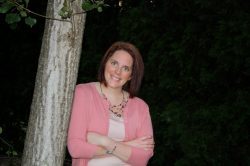 Kate Moretti is the New York Times bestselling author of THE VANISHING YEAR (9/16, Atria). She’s worked in the pharmaceutical industry for ten years as a scientist, and has been an avid fiction reader her entire life. She lives in Pennsylvania with her husband and two girls. She enjoys traveling and cooking, although with two kids, a day job, and writing, she doesn’t get to do those things as much as she’d like. Her lifelong dream is to buy an old house with a secret passageway.
Kate Moretti is the New York Times bestselling author of THE VANISHING YEAR (9/16, Atria). She’s worked in the pharmaceutical industry for ten years as a scientist, and has been an avid fiction reader her entire life. She lives in Pennsylvania with her husband and two girls. She enjoys traveling and cooking, although with two kids, a day job, and writing, she doesn’t get to do those things as much as she’d like. Her lifelong dream is to buy an old house with a secret passageway.Facebook: /Katemorettiwriter
Twitter: @KateMoretti1
www.katemoretti.com
Instagram: @KateMoretti1
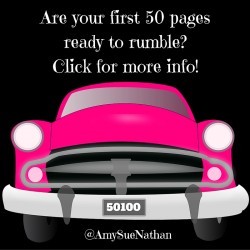
April 17, 2016
The Writing Life #3
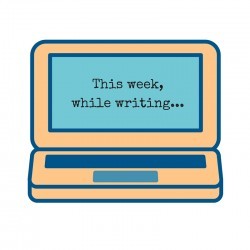
This week, while writing…well, I didn’t do much writing this week. I have been out doing that “living a life” thing. I headed East from Chicago to Philadelphia, New York City, and New Jersey, where I’m lucky to have family and lifelong friends. And pretzels.
I didn’t even take my laptop.
I did though, take my Kindle, my iPhone (hello, on-going lists!), and my army of notebooks and pens. Because even when I’m not writing, I’m a writer.
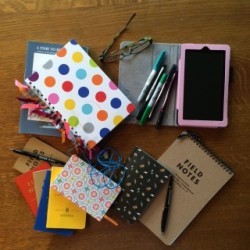
So, let’s kick this into a collaborative effort.
Below, I’ve pasted a link to a draft of my potential first scene for my possible novel four. Please note the qualifiers. DRAFT. POTENTIAL. POSSIBLE. You might read this novel in 2019 or so, and not recognize it. Hell, I might not recognize it, but this is, indeed, it’s seedling.
Remember, if these were the first pages of a published novel, you’d have seen a cover to set the mood. You’d have read back cover copy, or at least have it available to you. You may have read reviews, talked to friends, or “heard” about the book in one of eleventy-seven different ways one hears about books.
But you have none of that. (It would be fair to mention here, that THIS is what agents (and some editors) do every day. They read blind. Cue the makes-no-literal-sense music!)
THIS IS ABOUT SETTING EXPECTATIONS.
Another time, we can talk about living up to those expectations.
Tell me, Women’s Fiction Writers, do these pages set specific expectations for this story?
That’s what you need to know for your own stories, as well.
I’m putting this out there because it’s one of the main issues of my writing clients. And because it’s a main issue for me, but since I know about it, I’m able to address it before my agent, editors, and readers get their hands on it.
Until now.
Amy xo
P.S. Want feedback on the first scene of your work-in-progress from the WFW community? First, it must be women’s fiction. Second, you must agree to have a thick skin. Third, you must email me at womensfictionwriters@gmail.com with your name and Vonnegut in the subject line, and offer it up as if it’s your first born (and it might be)! All I ask is for a quick blurb/elevator pitch so I can determine if it falls under the women’s fiction umbrella as I define it. I’ll choose ONE at random and we’ll go from there. Maybe we’ll do it again. Maybe we’ll do it for eleventy-seven of you! (My blog, my rules.) Hope to hear from you soon!
CLICK TO READ THE FIRST SCENE*
*If you read, please comment. The more the merrier. No judgment. No prizes either.
April 11, 2016
Guest Post: How Yoga, Stars, And Getting Away From It All Inspired NY Times Best-Selling Author Jacqueline Sheehan To Call Herself A Writer
I met author Jacqueline Sheehan at the Tucson Festival of Books in March, when, along with Cathy Lamb, we were panelists discussing “Amongst Friends and Families.” Our books all deal with secrets kept from family and friends, so that was our focus.
Today Jacqueline has no secrets, as she shares with us the story of the trip where she finally called herself a writer. You’ll never believe what happened next.
Please welcome Jacqueline to WFW and share with us what inspired you to call yourself a writer.
Amy xo
How Yoga, Stars, And Getting Away From It All Inspired Me To Call Myself A Writer
Jacqueline Sheehan
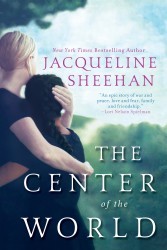 When people ask me to talk about the road to becoming a writer, I wish that I had a better answer. I don’t have an MFA and I didn’t major in English as an undergrad. I came from a family that could not have imagined writing as a viable career. We were a more practical bunch: nurses, teachers, and tree cutters.
When people ask me to talk about the road to becoming a writer, I wish that I had a better answer. I don’t have an MFA and I didn’t major in English as an undergrad. I came from a family that could not have imagined writing as a viable career. We were a more practical bunch: nurses, teachers, and tree cutters.
In my twenties, I tried freelancing with newspapers. I wrote feature articles that focused on eccentric characters: book store owners who practiced hypnosis on the side, ski instructors who taught people with disabilities to soar down ski slopes, zoo keepers in the desert of Alamogordo, NM. But it wasn’t nearly enough to live on. When I became a single parent, I scrambled for steady ground and turned to my second love, psychology.
For nearly twenty years, I was a psychologist in university counseling centers. But I wrote furiously, often before I went to work and part of most weekends. I took workshops about writing, attended conferences, and studied everything I could find about the craft of writing. Would I have called myself a writer? Absolutely not. A few short stories were published, then amazingly, I completed a novel and after an arduous search, an agent wanted to represent me. Would I have called myself a writer? No. Many rejections followed from the publishing world until one amazing day when Free Press, an imprint of Simon & Schuster offered to buy it. Would I have called myself a writer? Not exactly. I might have said that I write part of the time.
The sales were tepid and I was discouraged. My job as a psychologist at a college counseling center had grown stale. Correction: I had grown stale. Full disclosure: To say that I was hollowed out was an understatement. My mother had just died a few months before, I was still reeling from working with survivors of Hurricane Katrina, and I was trying to finish another novel.
I signed up for a writing and yoga retreat in the Mayan Highlands of Guatemala. It was a retreat center called Villa Sumaya. I wanted to do yoga, lots and lots of yoga, and scribble in my notebook until something shifted.
The yoga was not the ordinary studio yoga that I was accustomed to, even though I had practiced yoga since college and taught yoga. Yoga took place in The Tiger Temple, facing Lake Atitlan. Every morning I arrived early to sit in meditation as I watched a great blue heron soar low over the lake. Later, the huge temple vibrated with our Om’s and laughter. But the temple vibrated with something else; it was the strumming heartbeat of Lake Atitlan, and the Mayan people who have lived in the highlands for so long. Something started to shift, although it would not fully manifest for months.
Here was a sanctuary along the shores of Lake Atitlan that was so far removed from my daily life that I had to continually go through a reality check. Was it truly okay to nap in my hammock mid-day? Could the food really be this fantastic for every single meal? (Yes!) Are the stars actually this bright at night? Would I ever have as much courage as the delightful ex-pats who had created new lives around the lake? Would I ever be able to live my dream of being a writer?
During the retreat, I put the finishing touches on my novel. I assumed it would sell just as modestly as the first. And then somehow, I got the message that, if the Mayan people could survive an oppressive history, if that great blue heron could swoop over the lake every morning with such hope, if the local Shaman could insist that I would return to the Mayan Highlands, then I could chose to do the one thing I had always dreamt of. Would I call myself a writer? Yes.
When I returned to my job, I handed in my resignation. That book that I finished? Lost & Found became a New York Times Bestseller and sold over half a million copies.
I have just published my fifth novel, The Center of the World, and I owe such gratitude to Villa Sumaya, the retreat center, and the Mayan people. The novel is set partly along the shores of Lake Atitlan in 1990, and in Massachusetts 2003.
If someone had said, back when I was in my twenties, to design a path to become a writer, I could not have done so. I could not have imagined it, yet an ember of hope always glowed, sometimes so faintly that it was unseen.
Today, I offer writing retreats in Maine, Jamaica, and of course Guatemala. I have just turned in my next novel to Kensington Books. I’m a writer and I will be for the rest of my life.
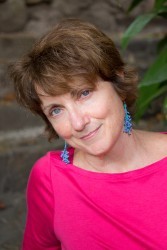 Jacqueline Sheehan, Ph.D., is a New York Times Bestselling author. She is also a psychologist. A New Englander through and through, she spent twenty years living far from home in Oregon, California, and New Mexico doing a variety of things, including house painting, photography, freelance journalism, clerking in a health food store, and directing a traveling troupe of high school puppeteers.
Jacqueline Sheehan, Ph.D., is a New York Times Bestselling author. She is also a psychologist. A New Englander through and through, she spent twenty years living far from home in Oregon, California, and New Mexico doing a variety of things, including house painting, photography, freelance journalism, clerking in a health food store, and directing a traveling troupe of high school puppeteers.
Her novels include, The Comet’s Tale a novel about Sojourner Truth, Lost & Found, Now & Then, and Picture This. Her newest book is, The Center of the World, by Kensington.
She writes NPR commentaries, travel articles, short stories, and essays including the New York Times column, Modern Love. She edited the anthology, Women Writing in Prison. Jacqueline has been awarded residencies at Hawthornden Castle in Scotland and Jentel Arts Colony in Wyoming. She teaches workshops at Grub Street in Boston and writing retreats in Jamaica, Guatemala, and Maine.
Learn more and connect:
@jrsheehan09
https://www.facebook.com/jacqueline.r.sheehan
Here is what Lori Nelson Spielman, Bestselling author of The Life List had to say about THE CENTER OF THE WORLD:
“THE CENTER OF THE WORLD is an epic story of war and peace, love and fear, family and friendship. Writing with honesty and grace, Jacqueline Sheehan examines to what length we would go to protect those we love, reminding us that sometimes secrets must be unraveled before our hearts can mend. In turns heartbreaking and heartwarming, it is the perfect book club selection—intelligent, thought provoking, and utterly captivating.”
April 10, 2016
The Writing Life #2
 This week, while writing, I remembered that I actually do have to WRITE to figure out a story. Outlining is all well and fine, but for me to even know what my story is, I have to start writing the first scene. That only happens when the first scene has presented itself to me, usually when I’m in the shower.
This week, while writing, I remembered that I actually do have to WRITE to figure out a story. Outlining is all well and fine, but for me to even know what my story is, I have to start writing the first scene. That only happens when the first scene has presented itself to me, usually when I’m in the shower.
Writing it AS IF it were the actual book, well, that’s how the whole thing comes together, the bits and the characters that won’t show up for ten, twenty, a hundred pages, all reveal themselves to me as I compose and construct my novel’s opening scene.
That’s why this is one of my favorite quotes about writing. Not only is Kurt Vonnegut one of my all-time favorite authors, his creative writing advice is spot on.
Give your readers as much information as possible as soon as possible. To heck with suspense. Readers should have such complete understanding of what is going on, where and why, that they could finish the story themselves, should cockroaches eat the last few pages.
If you’re scratching your head (or squirming due to the cockroach image) stop for a minute. To me, this doesn’t mean give away the twists and turns and surprises. To me, this means, setting your readers’ expectations. Allowing her to know who and what this story will be about. Wait (that’s what you’re thinking, isn’t it?) aren’t we supposed to surprise the reader? Yes, sure, but…how many times have we all heard, or known someone who has an agent, editor, or critique partner say:
I don’t know what the story is about.
How many times have you not even known what your story is about?
That’s what Vonnegut’s advice does for me. It absolves me of the pressure of keeping the novel a secret. It says let the reader be able to imagine what the story is about. Will she be right? Probably not. Imaginations have unique qualities, even if our ideas overlap. But that will add to the fun, for you and for your reader. As writers we think that cloaking the story will make the reader turn the page, when in fact, revealing the story is what will do that again and again through three hundred pages.
I often share with my editing clients that setting up the reader’s expectation as soon as possible is what’s most important. You can have a beautiful writing but most of the time (like 99%) that’s not enough. You have to have a great story, or at the very least, the promise of a great story, to hook the reader. Hints at who your main character is, what she wants, where she’s going, and how she’s going to get there should be present almost right away—even if it changes as the story progresses!
In most reading experiences, readers today do not turn too many pages because of beautiful writing alone. They turn the pages because the story compels them to do so. From page one.
That’s why it has taken me a week to write the first draft of a 1200 word first scene for my next novel. And by first draft I mean, I have rewritten it six times (that’s a low estimate). I am writing and rewriting and tweaking and polishing, knowing that it will likely change, and that it might not end up even being where the story starts. But writing it, I learn more and more about what’s to come later, and judiciously add bits that allude to the past and to the future of my characters and their stories.
Starting a new novel is literally starting all over again. I take with me what I’ve learned but am applying it to something new, which means, some of it works and some of it doesn’t, and some of it works in ways I didn’t think it could, or would.
It’s encouraging to me that little by little this new story is revealing itself to me. My plan is to write three to four chapters at which time I should (oh, I better) know more of the details of the rest of the story and can roughly outline it. Right now I have the main points set, but as we all know,
Authors plan, characters laugh.
For The Glass Wives I wrote a chapter and outlined the next. For The Good Neighbor I had a twenty-page synopsis that loosely guided my writing. For Left To Chance I used index cards, then decided I didn’t need them, then realized I wrong, then used index cards again. For this next book, I’m going to combine the methods I used for each book.
Next Sunday I will share my one-hundred times revised first scene of either Left To Chance or my WIP, and we can decide together if I’ve set up enough expectations for my readers. After that, I’ll ask for guinea pigs volunteers!
How was your week in writing? How do you feel about Vonnegut’s advice? Let me know in the comments!
Amy xo
April 6, 2016
Guest Post: Debut Novelist Jennifer S. Brown Was Too Busy To Write A Novel. Until She Decided She Wasn’t.
It’s a pleasure to welcome debut author Jennifer S. Brown to WFW today! I’ve been waiting a long time to introduce you to her and to her book, Modern Girls. I’ll be honest, I saw the cover and knew I needed to read it and to meet the author. My CP even emailed me the cover months ago and wrote, “This looks like it’s up your alley.”
Am I that transparent?
Apparently so!
The best thing about being an author is knowing other authors and learning their personal stories. Today, Jennifer shares with us how Modern Girls came to be, at a time when carving out time to herself went from the last thing on her mind, to the first.
Sounds familiar, doesn’t it?
Please welcome Jennifer S. Brown to WFW!
Amy xo
A Funny Thing Happened on My Way to Real Life: I Wrote a Novel
by Jennifer S. Brown
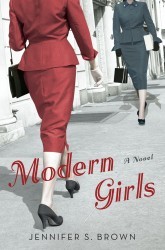 My first novel didn’t sell. Women’s fiction. Contemporary story. It went nowhere. This was before my active involvement on Facebook, and I didn’t realize at the time that not selling a first novel is actually rather common. Instead, I was sad and, yes, bitter, and I knew I’d never try writing a novel again. A world of possibilities existed for me besides writing… if only I could figure out what they were.
My first novel didn’t sell. Women’s fiction. Contemporary story. It went nowhere. This was before my active involvement on Facebook, and I didn’t realize at the time that not selling a first novel is actually rather common. Instead, I was sad and, yes, bitter, and I knew I’d never try writing a novel again. A world of possibilities existed for me besides writing… if only I could figure out what they were.
As a stay-at-home mother, I didn’t have a job to bury myself in. So I threw myself into stay-at-home tasks. I decided my kids’ elementary school needed a newsletter. So I started a newsletter. And what self-respecting school doesn’t have a literary journal? So I founded a journal. My daughter wanted to be a Girl Scout, but no troop was available in our neighborhood. So I volunteered to become a leader and form a troop. I had free time left over so I allowed myself to become obsessed with genealogy. You have no idea how many hours can be lost to genealogical research. Always a new rabbit hole to fall into.
A strange thing happened while I was busy doing these other things: A story began to form in my mind. With every new genealogical discovery, I found tidbits that I thought would make great elements in a story. My great-grandmother protested the czar in Russia? My great-great grandparents had eleven people living in one apartment on the Lower East Side of New York? My great-uncle was fired from his job at City University of New York for being a Communist? These were the kind of morsels that begged to be included in a novel. But if I were to use these elements, I’d be writing a historical novel. I’d never written historical fiction before, and I didn’t know where to begin. Not that I was going to write a novel. I was done with that.
My time was spoken for. I kept busy working with the kids. I managed a team of fifth graders who supervised the production of the literary journal, which was open for submissions from the whole school. Older kids helped younger kids transcribe their stories. Poems were crafted. Essays polished. That determination! Seeing how the children persevered was inspiring. At every Girl Scout meeting, we recited the law, and I’d cringe a little when we got to “I will do my best to be courageous and strong.” I quit after one novel didn’t sell. Was that the example I wanted to set for these girls? And while working on the newsletter, I rediscovered the joy of fact-checking. From fact-checking to out-and-out research is not a big step. Just for fun, I began to look into New York in the 1930s. Not that I was going to write a novel. No. I was merely curious.
Even though I was still sure that my novel-writing days were over, I casually perused the website of Grub Street, a writing center in Boston, because why not? To my surprise, there was a weekend seminar on writing historical fiction. Figuring I had nothing to lose, I signed up.
The funny thing about not writing a novel is that sometimes it doesn’t work out. That class was the final nudge I needed. I wanted to write. The great thing about being busy is my free time became that much more precious and now I knew how to spend it. Eagerly I came to my computer to write and research. Each day I found pockets of time to work. I wrote. I researched. I wrote some more. The important thing, though, is I was enjoying it again. I was writing a story because I was fascinated by an idea. I wasn’t worried about publishing it. All I wanted to do was to get it onto paper because I was in love with the history, with my characters, and I needed to see where it would all end up. And a year later, I had the first draft of Modern Girls.
Wouldn’t it be great to say that the finished product was a perfect novel and it sold instantly? It didn’t. My agent and I spent over a year revising it. Then my editor and I worked on it a lot more. But I couldn’t be prouder of where my novel ended up. Modern Girls is the outcome of a full life. Sometimes life needs to slow down for a writer to write; but for me, life had to speed up so I could find the story I had to tell.
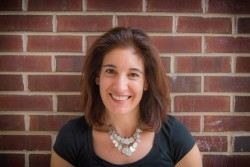 Jennifer S. Brown considers herself a Floridian, having moved to Miami as a three-year-old and spending the majority of her formative years in Miami Beach. But then again, she’ll also identify as a New Yorker after earning a BFA in filmmaking from New York University and sticking around the City to work in publishing and—for a very brief stint—at a talent agency (and to be technical about it, she was born in New York City). Her passion for Seattle developed when she earned her MFA in creative writing from the University of Washington and then settled into a job as an editor at, what was then billed as, “that little online bookstore,” aka Amazon.com. She now lives and writes in the suburbs of Boston.
Jennifer S. Brown considers herself a Floridian, having moved to Miami as a three-year-old and spending the majority of her formative years in Miami Beach. But then again, she’ll also identify as a New Yorker after earning a BFA in filmmaking from New York University and sticking around the City to work in publishing and—for a very brief stint—at a talent agency (and to be technical about it, she was born in New York City). Her passion for Seattle developed when she earned her MFA in creative writing from the University of Washington and then settled into a job as an editor at, what was then billed as, “that little online bookstore,” aka Amazon.com. She now lives and writes in the suburbs of Boston.
Her fiction, articles, and essays have appeared in numerous publications, and she was the winner of the 2005 World’s Best Short-Short Story Contest (judged by Robert Olen Butler) in the Southeast Review. Her creative nonfiction piece, “The Codeine of Jordan,” published in the Bellevue Literary Review, was selected as a notable essay in 2012’s The Best American Travel Writing and included in volume 9 of The Best Women’s Travel Writing.
Her first novel, Modern Girls, set in 1935 in the Lower East Side of New York, is about a Russian-born Jewish mother and her American-born unmarried daughter. Each discovers that she is expecting, although the pregnancies are unplanned and unwanted, in this story about women’s roles, standards, and choices, set against the backdrop of the impending war. Modern Girls is published by NAL and available everywhere books are sold.
You can reach her at jennifer@jennifersbrown.com or for e-mail updates on the novel and her writing, sign up for her newsletter.

Women's Fiction Writers
- Amy Sue Nathan's profile
- 543 followers



